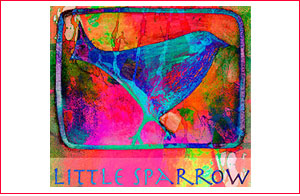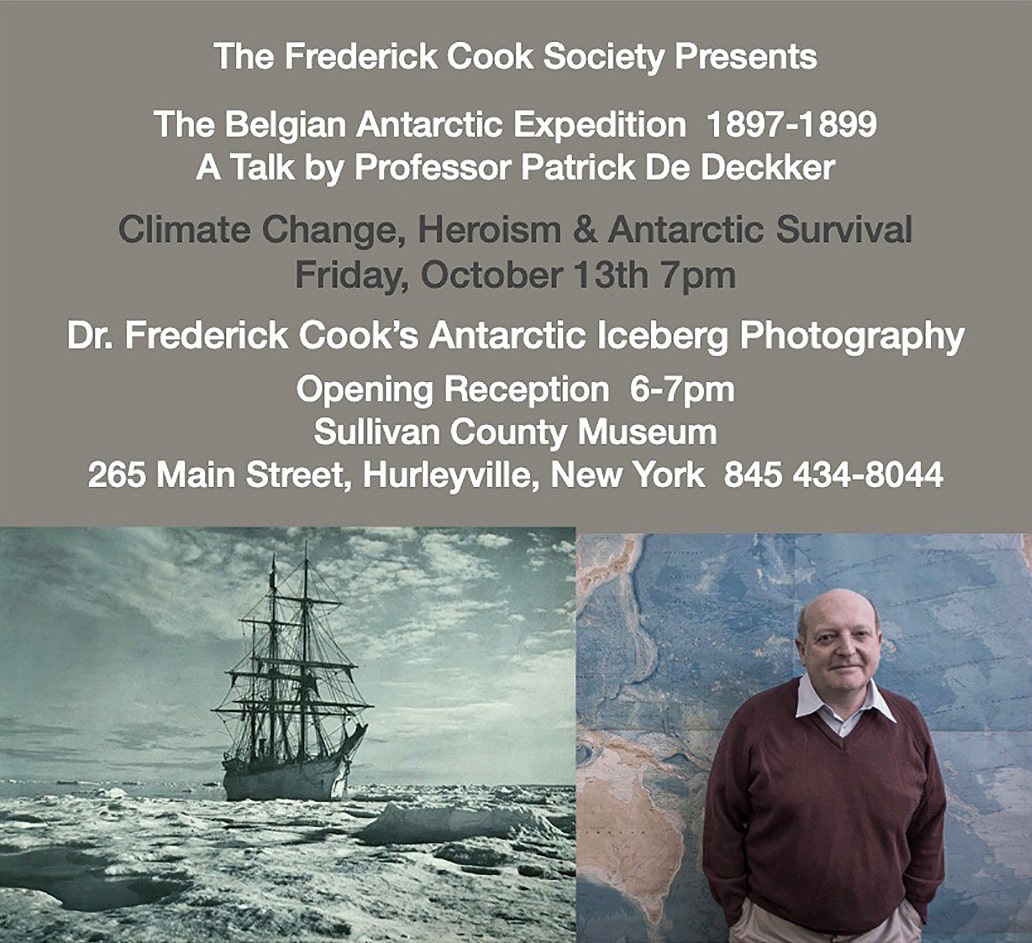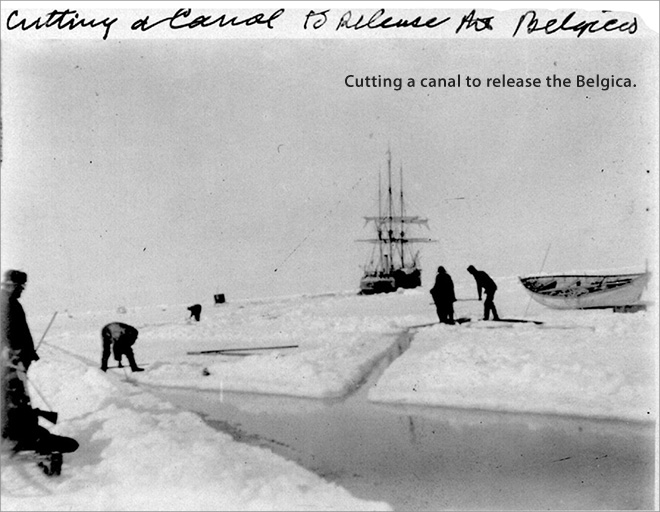Sponsored By:
Museum hours:
Tues. – Sat. 10:00 -4:30
Sun. 1:00 – 4:30
845-434-8044
The Frederick Cook Society Presents
The Belgian Antarctic Expedition 1897 – 1899
A Talk by Professor Patrick De Deckker
Climate Change, Heroism & Antarctic Survival
PLUS: Dr. Frederick Cook’s Antarctic Iceberg Photography
Opening Reception 6 – 7 pm
Friday, October 13th
Talk begins at 7 pm
Sullivan County Museum
265 Main Street
Hurleyville, NY 12747
Patrick De Deckker is a paleontologist who has led teams of research scientists on ships all over the world, studied the nature of the sea floor, collected sediment cores from the bottom of the ocean, and surveyed huge underwater canyons taller than the Grand Canyon, off Kangaroo Island.
He also worked to expose patterns of climate change on land and in the oceans, and his recent conclusions are clear. According to Professor De Deckker
“What distresses me is the level of anthropogenic changes affecting the natural world. We need to inform everyone, including managers and politicians, of the alarming level of change at all scales. This is important for future generations and all life on earth”.
On Friday, October 13th, at 7:00 pm, Professor Patrick De Deckker will speak at the Sullivan County Museum in Hurleyville, New York, on the extraordinary achievements of the Belgian Antarctic Expedition (1897-1899).
The Belgica was an exploratory expedition, but more importantly it was an exceptional and successful scientific voyage. A vast array of data was processed and eventually 92 scientific papers in some nine volumes were published by the Belgica Commission.
Disappointingly, those significant results have been mostly ignored in scientific literature. Professor De Deckker has translated much of the research, and his talk will inform scientists about where to obtain the information. The climatological and oceanographic data obtained on the Belgica can then be examined in line with the changes occurring today in the Antarctic Peninsula region as a result of global warming. Parts of the Belgica data form an important resource for assessing environmental changes over the past 120 years.
Professor De Deckker is a Fellow of the Australian Academy of Science, and an Emeritus Professor at the Australian National University.
The Talk will coincide with the opening of an exhibition Dr. Cook’s Iceberg photographs, taken in Antarctica and Greenland between 1896-1898.
Sullivan County native Dr. Frederick Cook was the physician, photographer and ethnologist on the Belgica Expedition. Dr. Cook is credited with saving the ship, which spent 13 months frozen in ice, and was the first expedition to successfully overwinter in Antarctica. Dr. Cook’s ingenious use of dietary changes, exercise, and light therapy saved the men from certain death from scurvy.
The talk will be illustrated with many original photographs taken by Dr, Cook, as well as with scientific illustrations and maps.
We are grateful to the following benefactors for their help on The Frederick A. Cook Polar project:
For more information contact Carol Smith, Frederick Cook Society, Executive Director, at 845 671-9548 or email: carol@frederickcookpolar.org
You may also call the Sullivan County Museum at 845 434-8044.
© The Frederick Cook Society | 2022
Sullivan County Museum P.O. Box 27. Hurleyville, NY 12747
FACpolar@frederickcookpolar.org
Site design by Roger Dowd Design







